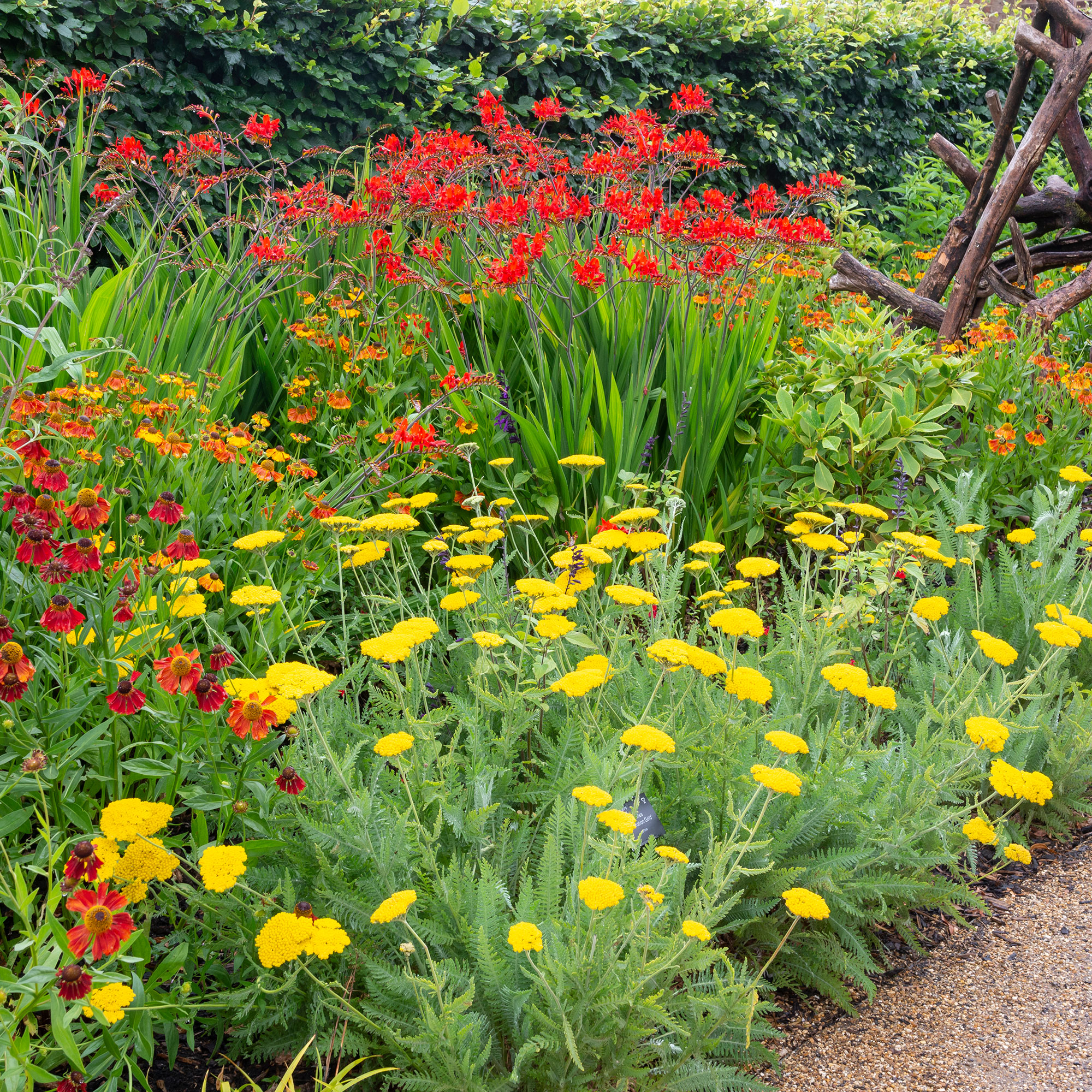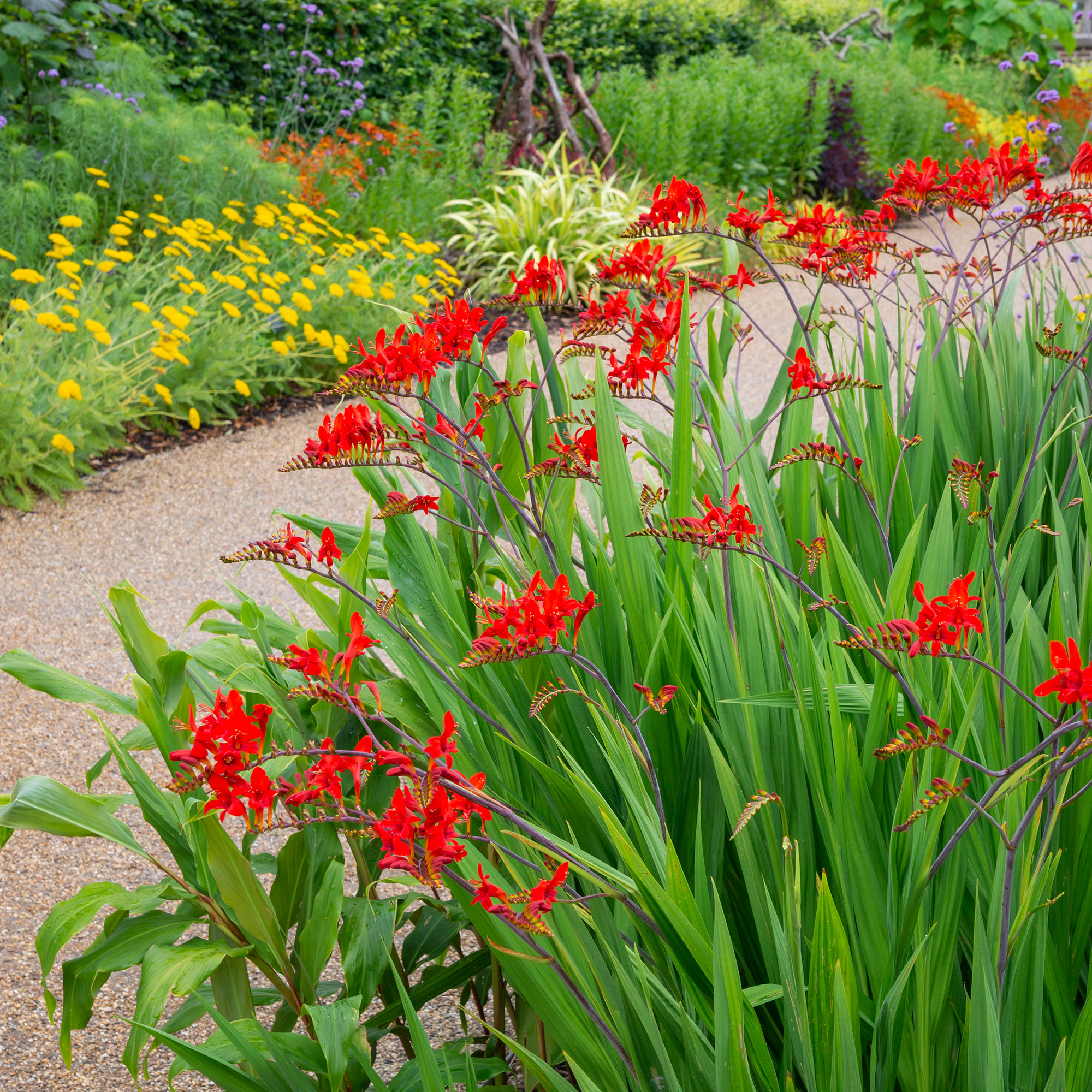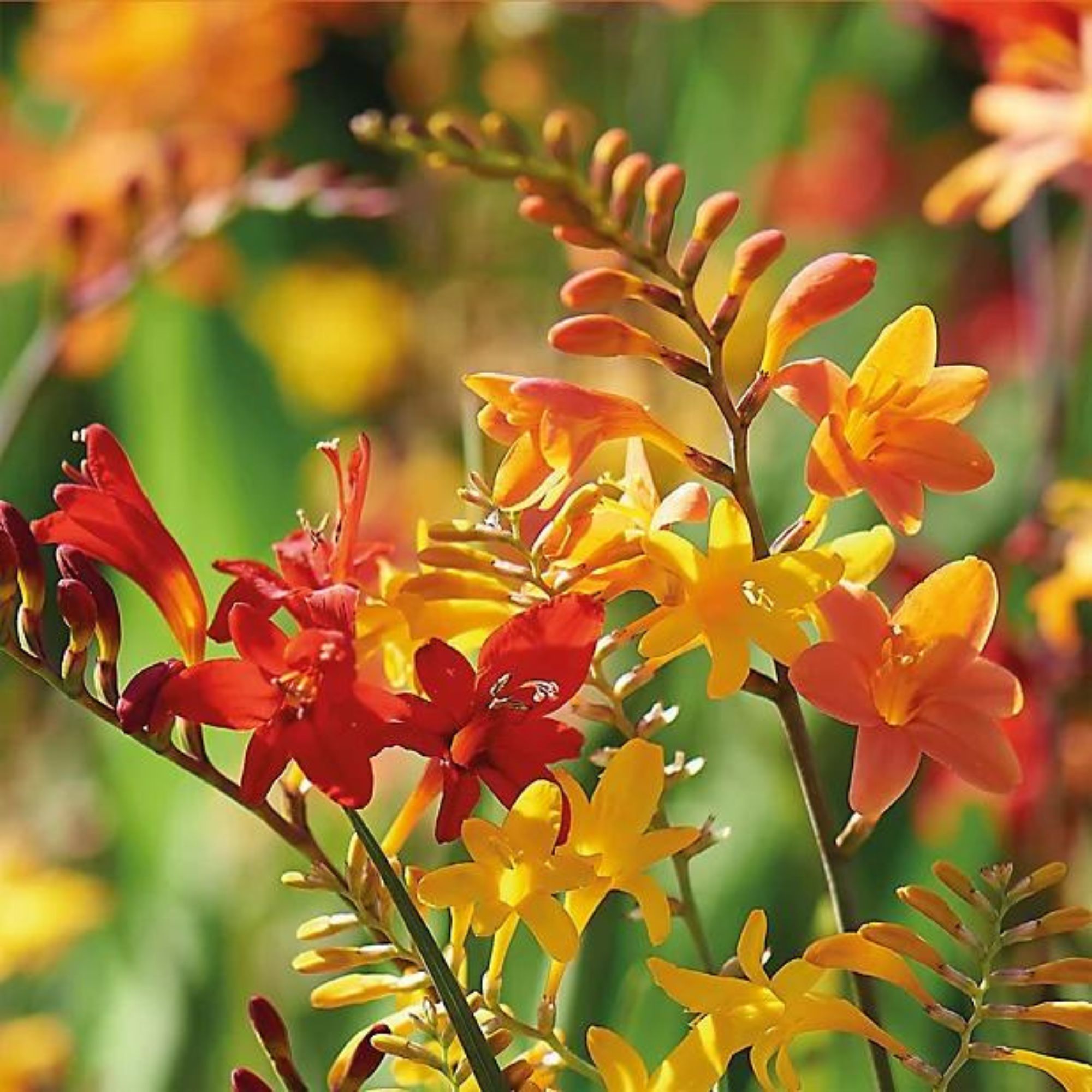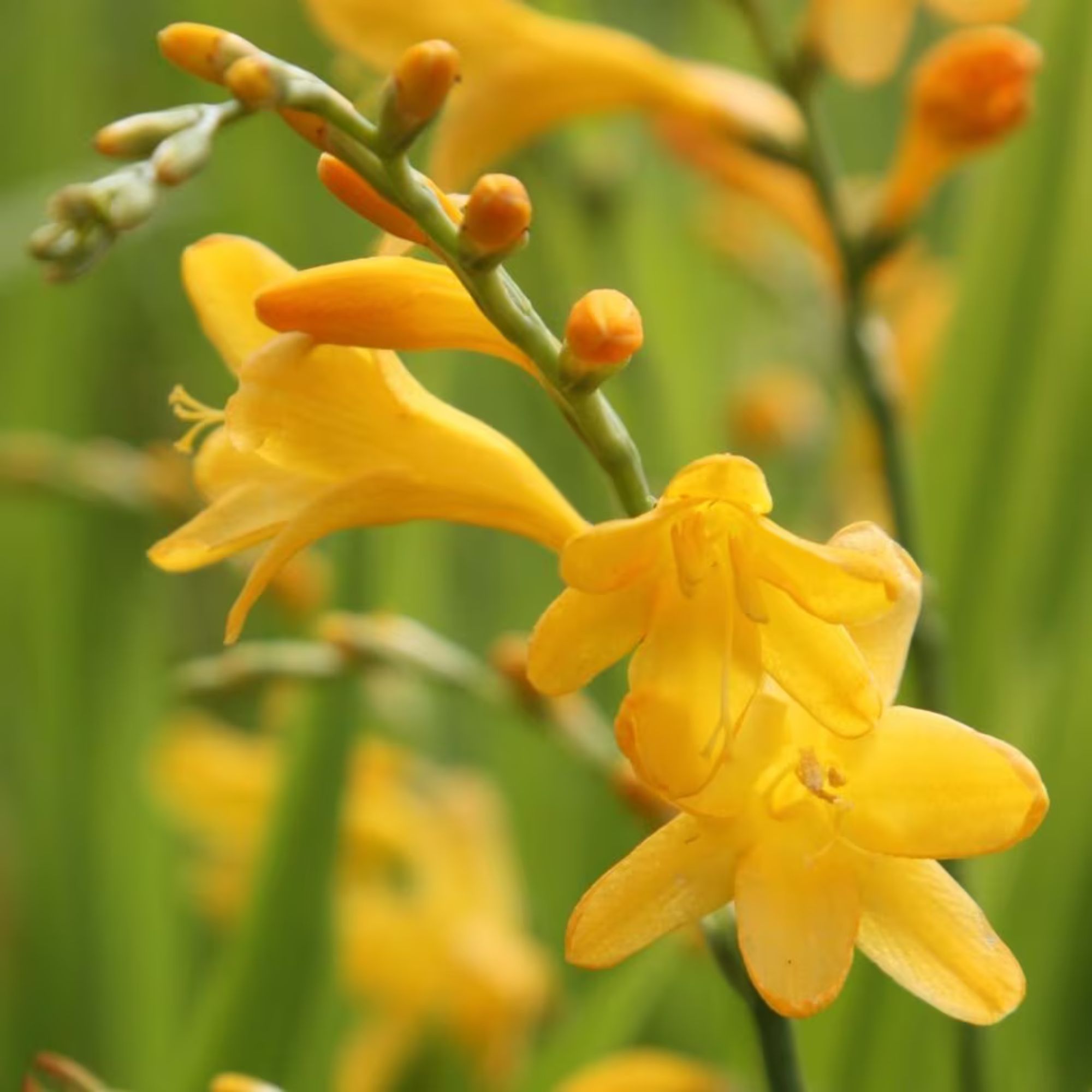When to plant crocosmia bulbs for a garden full of fiery blooms, according to experts
If you’re looking for late-summer bloomers, add crocosmia bulbs to your shopping list


If you’re wondering when to plant crocosmia bulbs, you’ve probably already fallen in love with these fiery red blooms and their exotic, tubular-shaped flowers. But to reap the rewards of this late-summer bloomer, you need to plant them at the right time and in the right place.
While you can plant crocosmia as growing plants in a container garden or as part of your garden border ideas, it’s often much cheaper to start from scratch and plant crocosmia corms instead. These underground stems are very similar to bulbs and will help to fill your garden with a burst of colour even when your other spring and summer flowering plants have faded.
So, when do you plant crocosmia bulbs? We reached out to garden experts to help you choose the right time for you and your garden.
When to plant crocosmia bulbs
Knowing when to plant summer bulbs is key, and this is no different for crocosmia corms. Luckily for you, there’s no set date to plant crocosmia corms. Instead, experts simply suggest planting in early spring.

Because of this, it’s best to plant crocosmia bulbs between April and May. The exact time will depend on the weather in your area, as you should always plant crocosmia corms when the risk of frost has passed and the chilly soil has had a chance to warm up.
This is echoed by Steve Chilton, garden expert at LeisureBench, who says, ‘Spring is the best time to plant crocosmia bulbs outdoors, around April/May time. However, if you're planting them inside, you can do so from February/March time. They prefer warmer temperatures in order to grow quicker, which is why March is generally just a bit too early for them to be planted.’
You should always be careful when planting crocosmia bulbs in your garden, though. Like bamboo, crocosmia can be incredibly invasive and take over your garden if you’re not careful.
Sign up to our newsletter for style inspiration, real homes, project and garden advice and shopping know-how
Steve explains, ‘Crocosmia grown in pots is beneficial for those with smaller gardens and little space, however, you should maybe opt for a less vigorous variety or one that is labelled as being suitable for container growing. You might also choose to grow them in pots so that they're easier to control and look after and won't invade any other plants.’

‘In my opinion, planting them in the ground is the ideal method as it gives them more space to spread out every year, however, it will require more maintenance if you don't want them to get too big. Some varieties of crocosmia are invasive, so just make sure to opt for a non-invasive one if you want something less time and effort consuming.’
Yes, while crocosmia will offer late-summer blooms from June to October, they can quickly take over - and that’s where the distinction between bulbs and corms comes into play. These crocosmia corms will multiply throughout the year, leading to a collection of congested corms under the surface.
When this happens, the growth and vibrancy of your flowers may dwindle, so it’s important to keep on top of crocosmia maintenance. Ideally, you should lift and divide the plants and the corms every three years to maintain and increase growth.

When you’ve picked the perfect time to plant your crocosmia bulbs, the only thing left to do is to give them some TLC while they grow. Craig Morley, a gardening expert from Budget Seeds, says, ‘Crocosmia that are planted in the ground will need to be watered regularly until they are growing strongly, but after this they will not need much additional watering unless their soil dries out in summertime.’
‘In contrast, bulbs that are in pots should be watered often during their growing season, as their soil can dry out much quicker than that of those in the ground. Plants in containers may also benefit from feeding with a fertiliser high in potassium, as this will encourage them to flower.’
If you do all that, you’ll have blooming crocosmia in no time.

Steve is a passionate and knowledgeable garden expert with several years of experience within the field and has developed strong expertise for all things nature and plants. Steve is a keen educator and loves to share this knowledge with others. He strives to simplify complex garden practices and encourage eco-friendly gardening.
Where to buy crocosmia bulbs
FAQs
What month do you plant crocosmia bulbs?
You should plant crocosmia bulbs (corms) in early spring, so anytime between March and May should suffice. However, this garden job should ultimately be determined by the weather at the time.
If the weather is still cold at the end of March and you can still spot frost on the ground in the mornings, it’s still too cold to plant crocosmia corms. You should wait until the risk of frost has passed completely before planting them.
Can you plant crocosmia bulbs in autumn?
Although it’s possible to buy crocosmia plants in the autumn, you should avoid planting crocosmia corms in the autumn. They are extremely vulnerable to the cold weather and won’t survive the winter months without extra care and attention. Instead, plant crocosmia corms in the spring.
Do crocosmia come back every year?
Yes! Although crocosmia blooms will die back at the end of autumn, each crocosmia plant produces a new corm every single year, meaning it will come back year after year.
However, the more corms it grows, the more congested the plant becomes, and the more it has to battle for water and nutrients. Because of this, it’s recommended to divide the plants and the corms every three years to keep the blooms flourishing.
If you haven’t already, it’s time to plant your crocosmia bulbs.

Lauren Bradbury has been the Content Editor for the House Manual section since January 2025 but worked with the team as a freelancer for a year and a half before that. She graduated with a Bachelor’s degree in English and Creative Writing from the University of Chichester in 2016. Then, she dipped her toe into the world of content writing, primarily focusing on home content. After years of agency work, she decided to take the plunge and become a full-time freelancer for online publications, including Real Homes and Ideal Home, before taking on this permanent role. Now, she spends her days searching for the best decluttering and cleaning hacks and creating handy how-to guides for homeowners and renters alike, as well as testing vacuums as part of her role as the Ideal Home Certified Expert in Training on Vacuums, having spent over 110 hours testing different vacuum models to date!


